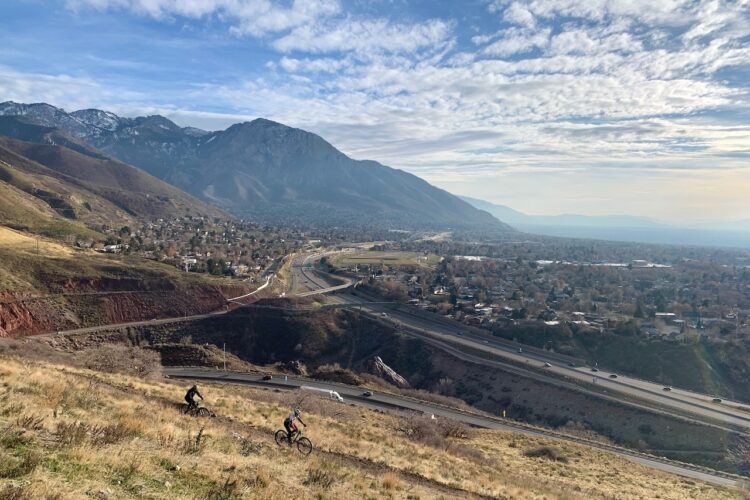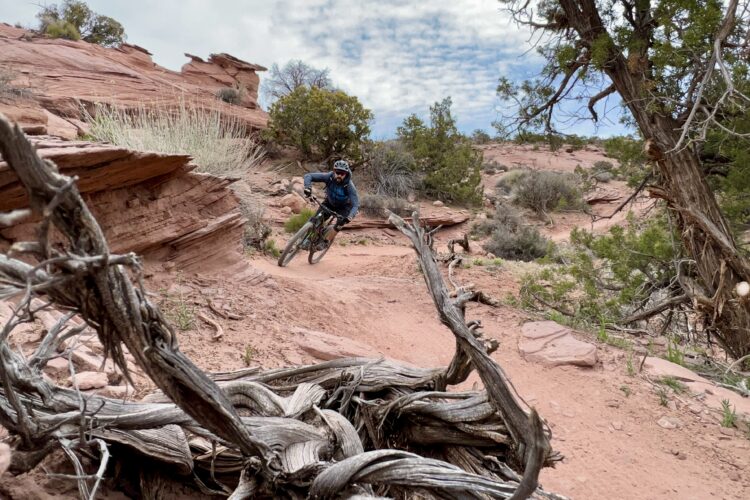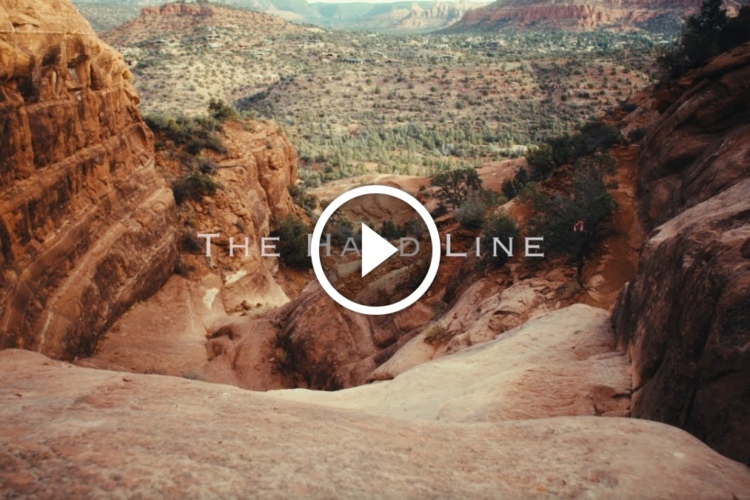Mountain bike influencer and athlete Remy Metailler is feeling some pressure from his Instagram followers and the U.S. Bureau of Land Management’s Moab field office after posting videos of himself riding illegally off-trail to his account.
In early October of 2022, Metailler posted a video of himself riding down a massive rock feature in Moab and into the area’s delicate cryptobiotic soil.
“Sound on! I tried to break the sound barrier and went for the speed record on this iconic line!” read the original caption. “Also that was the very first thing I rode while in Moab. A good warm up for what I did next…” The video had been viewed over 90,000,000 times, according to Instagram.
On January 5, 2023 however, Metailler reposted a clip of the footage with a statement about riding illegal trails. Metailler declined an interview with Singletracks but confirmed in comments on his public Instagram profile that the BLM wrote the statement and that both parties thought it would be a good way to spread awareness about riding illegally in the area.
“Illegal line, do not ride. Most of you have seen my videos from Moab, Utah, including a clip of this fin that went viral, but I would like to take some time to make a statement about it:
Back in October, I visited Moab for the first time. I had been dreaming about riding down there for a good ten years, and was stoked to have the opportunity. The line featured in this video had been ridden prior, but it is an illegal route. It is off the trail and should not be ridden. Unfortunately, by riding down it, I broke the rules of the place I visited and I should not have done it.
The Bureau of Land Management (BLM) has regulations in place to help manage and protect public lands. Mountain bikes and motorized vehicles are restricted to designated roads and trails on BLM land in the Moab, Utah area. The only non-motorized free-ride area is Bartlett Wash, accessed via the Bartlett/Jedi Slickrock Trailhead. These regulations are in place to preserve the place for all users to enjoy. Off trail riding causes damage to the fragile desert environment including cryptobiotic soil and rare plants. Violators can face fines or a ban from visiting federal public lands. I have been in contact with the BLM and am working with them to help spread awareness about off trail riding in this area and ask riders to stay on the designated trails, which is what I will do the next time I visit Moab.”
At the time of publishing, the video received nearly 450 comments with mixed opinions from viewers. Some lauded Metailler for his humility to share that he was wrong for riding off-trail. Some said no apology was necessary for making a great video or riding public lands. Others thought posting another video of himself riding the line with the statement that others shouldn’t ride it was hypocritical.
“I post that because I acknowledge a mistake I have done and because the BLM and I thought this would be a good way to spread awareness to illegal riding in Moab,” wrote Metailler in a comment. Asked by commenters why the video wasn’t removed, Metailler said the decision was the BLM’s and it would be more impactful to leave the video and raise awareness.
The BLM was unable to respond to questions from Singletracks or confirm the details of their arrangement with Metailler ahead of press time.
According to the Grand County website, biological soil crust, also known as cryptobiotic soil is living crust of algae, bacteria, lichen, moss, and fungi that covers much of the soil surface around Moab. “The crust is essential to desert life. It holds sand together, retains water, and makes nutrients needed for larger plants to grow.”
It can take over a century for this crust to reach full development, Grand County notes, and foot prints and tire tracks not only wreck the crust but create ruts and erosion.
“Going off trail in a vehicle is illegal. Going off trail with you own feet is not, though the signs might not suggest such is the case,” notes a Moab Times article. BLM documents online and signage across the area advise trail users to stay on the trail.
“When on land governed by the Bureau of Land Management, using your own two feet to leave the trail will not get you fined or imprisoned,” the article also notes. “That’s according to the Moab Field Office, which said that there is no law that forbids backcountry hiking on BLM land.”
Moab has struggled with skyrocketing tourism in the past decade and with finding ways to keep the recreation mecca’s visitation sustainable. In a Utah Office of Tourism and University of Utah survey, most Moab residents’ attitudes were negative regarding tourism in the area, according to Moab Times. Almost 60% of residents felt their quality of life had declined due to tourism and 69% of residents felt that the effects of tourism on the natural environment are negative or very negative.
An NPR article from 2021 also notes that some see a lack of enforcement regarding environmental rules on federal public lands. Between the increase in tourism, an old lodging tax law that requires tax revenue from tourists to be spent on more tourism marketing, and a town that has been built on tourism, Moab leaders are often in a precarious spot when managing situations like this.
Editor’s note: Updated to include Youtube links and a video referencing the Leave No Trace “Don’t Bust the Crust” campaign.






















21 Comments
Jan 6, 2023
Jan 12, 2023
Jan 6, 2023
Jan 8, 2023
Jan 9, 2023
Jan 10, 2023
Jan 10, 2023
Jan 10, 2023
Is there any evidence of the long term effects of mtn biking on these soils?
Jan 8, 2023
Jan 11, 2023
Jan 12, 2023
Jan 12, 2023
Jan 7, 2023
Jan 11, 2023
Jan 7, 2023
Jan 11, 2023
Jan 9, 2023
Jan 12, 2023
Jan 12, 2023
Jan 12, 2023
Jan 11, 2023